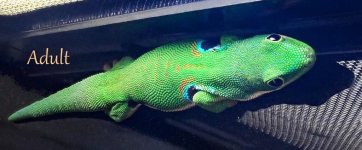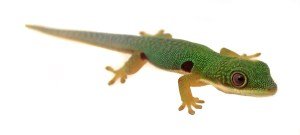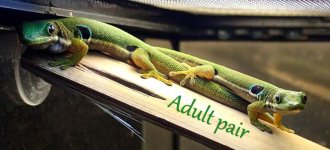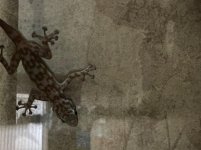I'm very new to the hobby. I'm a foster parent and had two boys come to me with reptiles. They had a House Gecko and an Iguana. They didn't know they had to replace the UV bulb regularly. The Iguana got calcium deficient and didn't make it. I wasn't much of a reptile fan. I babysat the gecko while they were at camp and developed a soft spot for the little guy. I told them they can have pet reptiles within reason as long as they research the animal and we are able to properly care for them. I started researching gecko care to make sure the gecko didn't end up going down the same road as the Iguana.
Fast forward a little bit... One of the boys has a juvenile beardie and the other has an Ice Blue Tegu. They appreciated my interest in the hobby even though I'm not a huge fan of reptiles. They saved their money and bought their new reptiles. While they were picking them up with my wife, they picked out a new enclosure and supplies so I could have their gecko. I don't see it much, unless I can go look at it before my wife gets up and turns on lights.
I'm doing research and trying to decide what kind of gecko to get and how I want to set up a vivarium. I want to get a day gecko, so I can watch it in the evening or on days off. Right now I'm looking mostly at Neon Day Geckos, Cameroon Dwarf Geckos and Pea**** Geckos. I know those are pretty popular geckos and they may be hard to come by.
I'm sure I'll have plenty of questions once I get closer to jumping down the rabbit hole. Thank you in advance for your help.
Fast forward a little bit... One of the boys has a juvenile beardie and the other has an Ice Blue Tegu. They appreciated my interest in the hobby even though I'm not a huge fan of reptiles. They saved their money and bought their new reptiles. While they were picking them up with my wife, they picked out a new enclosure and supplies so I could have their gecko. I don't see it much, unless I can go look at it before my wife gets up and turns on lights.
I'm doing research and trying to decide what kind of gecko to get and how I want to set up a vivarium. I want to get a day gecko, so I can watch it in the evening or on days off. Right now I'm looking mostly at Neon Day Geckos, Cameroon Dwarf Geckos and Pea**** Geckos. I know those are pretty popular geckos and they may be hard to come by.
I'm sure I'll have plenty of questions once I get closer to jumping down the rabbit hole. Thank you in advance for your help.






